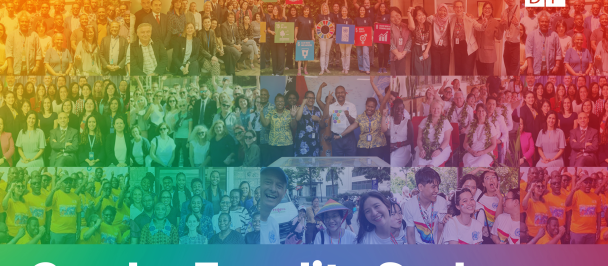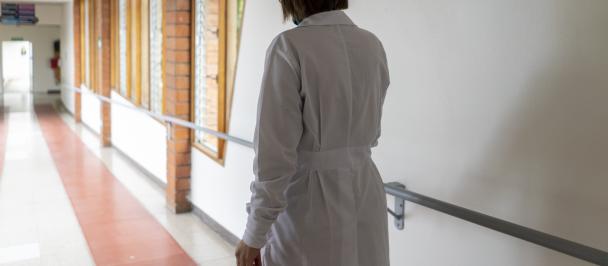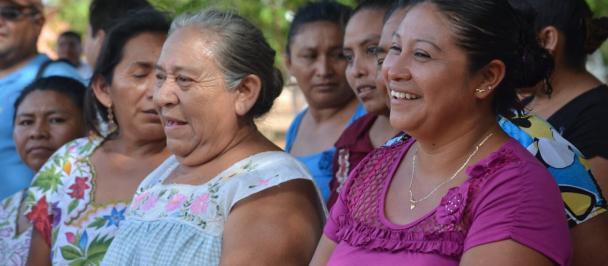More precise analyses are key to formulating gender-sensitive policy recommendations
Multidimensional poverty measure with a focus on women to eradicate poverty in Latin America and the Caribbean, UNDP proposes
October 17, 2023
October 17, 2023, Panama City, Panama —Breaking down systemic barriers to gender equality has never been more urgent to reduce inequalities, for this reason, within the framework of the International Day for the Eradication of Poverty (IDEP), the Program of the United Nations for Development in Latin America and the Caribbean (UNDP LAC) presents a proposal for a Multidimensional Poverty Index (MPI) with a focus on women with data from 10 countries in the region (Bolivia, Chile, Colombia, Costa Rica, El Salvador, Honduras, Mexico, Panama, Dominican Republic and Uruguay).
The analysis reveals that 27.4 percent of women experience multidimensional poverty. Poverty intensity, measured as the average proportion of deprivation among poor women, is 48 percent. That is, on average, women in poverty experience deprivation in almost five of the ten indicators that make up this MPI.
“Ending poverty in all its dimensions requires addressing the structural barriers that women face. Accurate analysis of how women experience multidimensional poverty is essential to address their specific needs, identify obstacles that prevent them from escaping poverty, and formulate recommendations for gender-transformative policies,” says Michelle Muschett, regional director of UNDP LAC.
The feminization of poverty in the region is a well-documented phenomenon, according to ECLAC data for 2019 - before COVID-19 - for every 100 poor men there were 113 poor women in the same condition, while for 2021 - post-pandemic - the number increased to 100 men living in poor households in the region and 116 women in a similar situation. This acts as a structural barrier for societies, for sustainable development, and for the achievement of the 2030 Agenda since it limits the economic, physical, and decision-making autonomy of women and their families.
In the 10 countries analyzed, 19 percent of urban women experience multidimensional poverty; this percentage is almost three times higher for rural women, reaching 58 percent. Likewise, the study shows that the main deprivations faced by women in situations of multidimensional poverty in these countries are related to an “unfavorable activity condition” – unpaid domestic and care work, informality, or salaried work that does not reach the minimum salary -; and “lack of internet access” with 66.3 percent and 50.6 percent of adult women, respectively.
This proposal is structured around five dimensions and twenty-one indicators: health and violence, education and access to information and communication technologies (ICT), work, housing and access to basic services, and economic rights and participation. The index highlights the urgency of collecting gender-sensitive data in household surveys to effectively measure gender-sensitive poverty and offers recommendations to ensure data disaggregation according to relevant criteria such as age, ethnicity, disability, geographic area, gender identity, sexual orientation, religion, immigration status, nationality, income level, motherhood and age of dependent people to analyze the intersectionality of deprivations in women. Likewise, the index suggests the inclusion of indicators related to time use, violence, and sexual and reproductive health in future surveys.
The analysis also recommends implementing public policies in four key areas to promote a sensitive gender transformation: social protection, comprehensive care systems, active labor market policies, and fair tax systems, as well as considering the challenges and discriminations of women in their diversity, address their economic value, ensure their safety and improve their quality of life.
Despite the advances, this study highlights the complex realities of poverty that women still face in Latin America and the Caribbean and seeks to contribute to the development of public policies that are gender transformative, allowing the development and empowerment of women, in addition to safeguarding decades of progress.
The UNDP proposes three strategies to decision makers to incorporate a gender perspective in the multidimensional measurement of poverty: 1) integrate gender-sensitive indicators into the existing Multidimensional Poverty Indices; 2) analyze the Multidimensional Poverty Indices from a gender perspective; and 3) develop a specific MPI for women.
Download here the proposed Multidimensional Poverty Index with a Focus on Women.
Media Contacts:
Ana María Currea, ana.maria.currea@undp.org
Vanessa Hidalgo, vanessa.hidalgo@undp.org
About UNDP:
The United Nations Development Program is the leading United Nations organization fighting to end the injustice of poverty, inequality and climate change. Working with our extensive network of experts and partners in 170 countries and territories, we help nations build integrated, lasting solutions for people and the planet.
More information at: www.undp.org/es/latin-america
Note to editor on measurement:
In the first stage of construction of the index, an analysis of the underlying causes of female poverty in Latin America and the Caribbean was carried out to identify the main dimensions to consider. Based on these findings, an "ideal version" or complete version of an MPI was developed with a focus on women until a "feasible version" was reached, after a review process of the Household Surveys available before 2020 in the different countries in the region that were selected for the study.
The "ideal version" of the MPI with a focus on women is structured around five dimensions: Health and violence, Education and access to ICT, Work, Housing and access to basic services, and Economic rights and participation. This MPI proposal has 21 indicators and assumes that all the information necessary to measure the different aspects of female poverty through the proposed indicators is available in the same data source.
In a second stage, a process of reviewing the availability of information was carried out to estimate these indicators in the household surveys of the 10 countries selected in the study: Bolivia, Chile, Colombia, Costa Rica, El Salvador, Honduras, Mexico, Panama, Dominican Republic and Uruguay. Of the 21 indicators initially proposed, only 13 were available, totally or partially, in all household surveys carried out around 2019.
The "feasible version" of the MPI with a focus on women for LAC considers women aged 18 years and over as a unit of identification and analysis and has five dimensions: i) Health and care services, ii) Education and household composition , iii ) Economic autonomy, iv ) Access to Information and Communication Technologies (ICT), and v) Housing and access to basic services.

 Locations
Locations

